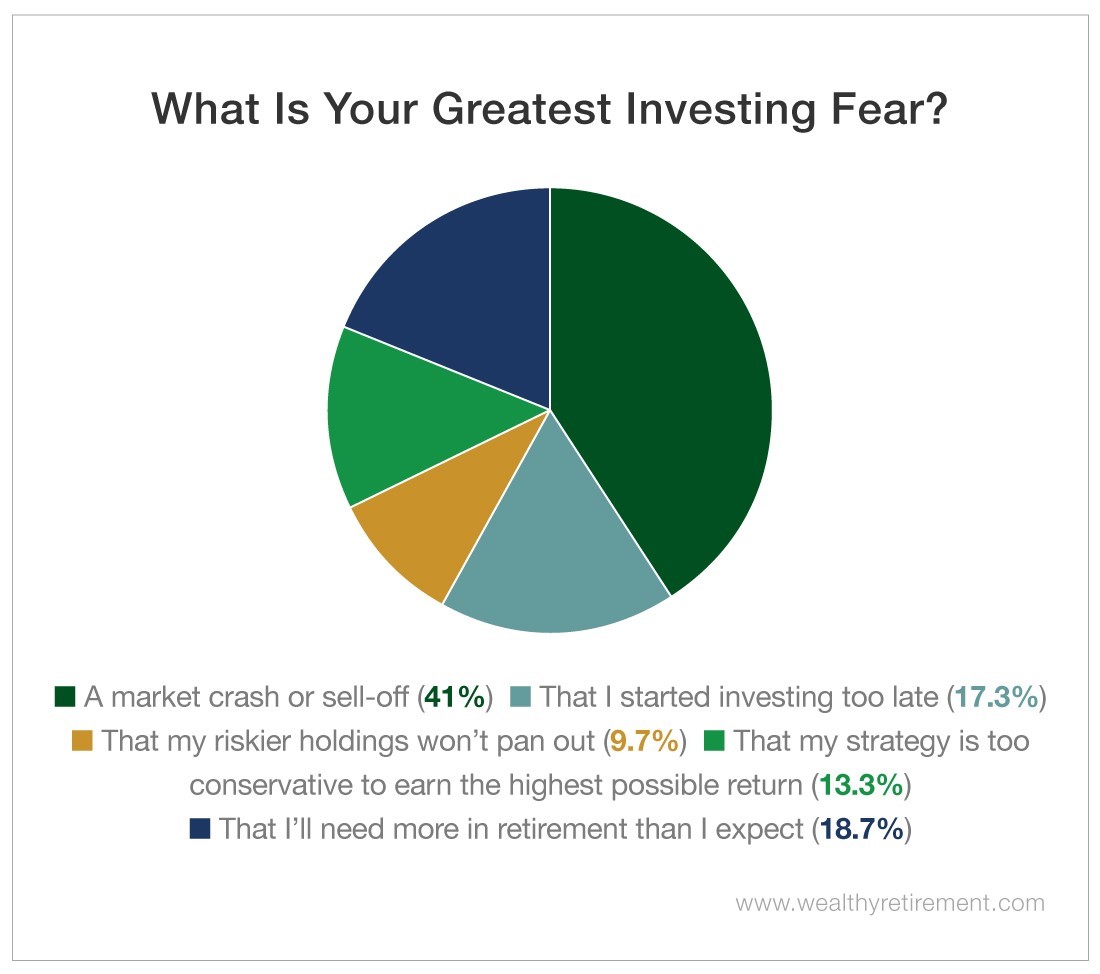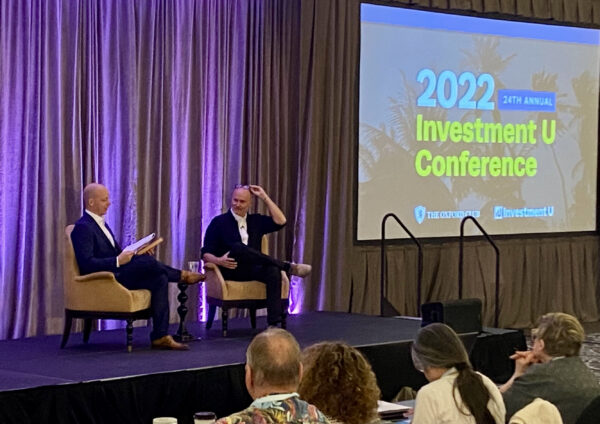Walk Over Your Investing Fears – and Earn a Perfect 10
On Wednesday, investors watched as the Federal Reserve slashed interest rates for the third time in 2019.
The S&P 500 index rose following the news. However, while general sentiment may be improving, it won’t fully erase the bearish omens we’ve seen over the past few weeks.
In fact, a recent study by E-Trade revealed that this month, active investors with valuable assets are twice as likely to expect a recession to hit before 2020 than they were in September.
Fed Chair Jerome Powell reportedly stated that it would take a significant change in inflation for the committee to consider raising rates again.
For those of us who rely on investments for retirement income, or who are knocking on retirement’s door, this means that we’ll earn less on our savings.
And – as I mentioned – it also stokes fears of recession. It’s a difficult truth, but investors who are nearing retirement don’t have the time to make up for losses from a sell-off.
With this in mind, our most recent survey couldn’t have been timed any better. In it, we asked Wealthy Retirement readers about their biggest investing fears.
Surprisingly, we’re taking a cue from sports medicine to help you overcome them.
But first, let’s dig into the results…
Forty-one percent of Wealthy Retirement readers report that a market crash or sell-off is their greatest investing fear.
Nearly one-fifth of readers were worried that they would face unexpected expenses in retirement. Up to 17.3% fear that they began investing too late.
Other fears included missing out on lucrative opportunities and losing principal on risky investments.
A rate cut certainly won’t mitigate this anxiety.
It’ll also create a tricky problem for investors who, fearing a sell-off, would ordinarily turn to long-term Treasurys (or funds that hold them).
These Treasurys and funds now approach the negative yields common in the rest of the world.
However, all is not doom and gloom in the market.
In fact, facing these fears of recession could inspire you to adopt your most lucrative investing strategy yet.
Rates Are Falling, but You Can Stick the Landing
A study published by Purdue University examined seven strategies used by junior Olympic gymnasts to soothe fears of injury.
(For investors who’ve struggled to navigate the market’s flying flips and twists, the conclusions are surprisingly applicable.)
Athletes had originally turned to three staple strategies to soothe their fears.
These included commitment to their original goal (represented in the mantra “Just go for it”), superstitious practices and the assurance of a coach.
Effective coaching is one of our foremost priorities here at Wealthy Retirement. However, the former two methods are questionable at best.
For investors, these translate into flying into volatile trades without doing due diligence or relying on conspiracy theories like the Plunge Protection Team (PPT) for comfort.
(As you can imagine, these strategies offer little help in the long term for either investors or athletes.)
However, four psychology-informed cognitive strategies were able to provide the gymnasts with relief. These included focus and attention, relaxation, imagery, and positive self-talk.
- Selective Focus and Attention
A gymnast might think of a time when they have successfully performed a move in order to reassure themselves that they can do it again.
Investors can take comfort in the knowledge that while bear markets are a fact of investing, the market still returns 8% on average.
Don’t let past bears haunt you. In most cases, making up losses takes only a matter of months.
- Relaxation
A gymnast can relax their body through meditation. Investors can relax their “trigger fingers” and resist the urge to panic-sell in a downturn.
At Wealthy Retirement, we advocate for a long-term dividend reinvestment strategy. Regardless of the market’s twists and turns, compounding will deliver – so let it work its magic.
(And the best part? Taking advantage of this “wonder of the world” does not require decades of intense physical training.)
- Imagery
This involves more than just imagining a market surge. Consider what you would do with your profits. It will rededicate you to the purpose that you set for your investing.
- Positive Self-Talk
Finally, trust yourself. Remind yourself of the strategies, like trailing stops, that you have set in place to protect your investments.
When it comes to investing, worry is not lucrative.
But by adopting proven strategies to control your investing anxiety and remember your purpose and strategy, you can keep your profits secure and sleep more easily at night.
Three Strikes, but We’re Not Out (Yet)
With each rate cut, many investors are refinancing their debt, leaping from rate to rate like a gymnast on uneven bars.
Others are tempted to flee from their riskier holdings, slipping as if they’re on a balance beam.
We’ll see if an economic boost prevents another cut in the fourth quarter or even adds enough spring to the market for a rate hike.
However, regardless of what happens to interest rates, if your long-term holdings have solid fundamentals, leave them be.
Step off the balance beam and enjoy all of the simple pleasures that your financial worry has been preventing you from fully enjoying.
With just a little dose of self-confidence and discipline, you can turn that unsteadiness into a powerful handspring forward.
[adzerk-get-ad zone="245143" size="4"]





